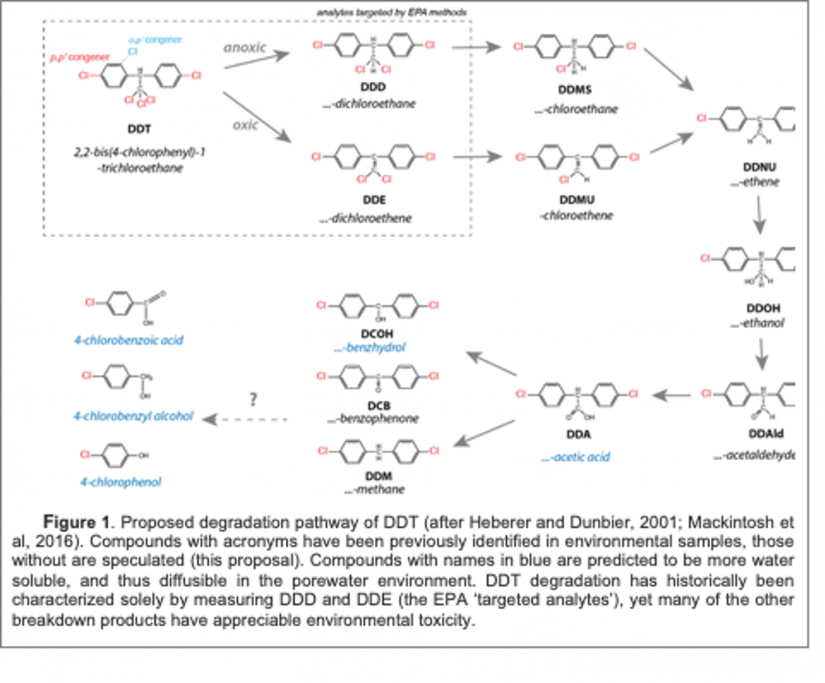
PRINCIPAL INVESTIGATORS: Will Berelson, University of Southern California
CO-PRINCIPAL INVESTIGATORS: Alex Sessions, California Institute of Technology; Hope Johnson, CSU Fullerton; Lisa Collins, Santa Monica College
Project Administrator: USC Sea Grant
PROJECT SUMMARY:
The pesticide DDT and associated chemicals have been found throughout the Southern California Bight. DDT breaks down into many products, each with differing potential toxicity. A barrier to a greater understanding of the extent and risk of DDT contamination is the lack of a routine analytical method to measure the full suite of DDT breakdown products and related byproducts (referred to as “DDT+”) and a better understanding of how the breakdown products are impacted by the local chemical environment.
This project will develop new methods that dramatically improve the accessibility and cost efficiency of efforts to measure DDT+. The researchers will leverage these techniques to better understand how DDT+ may escape contaminated sediments - particularly by looking at whether water soluble DDT+ compounds (e.g., DDA) are moving from contaminated sediments into sediment porewaters at sites between the L.A. Harbor and north-central San Pedro Basin. The researchers will also explore how DDT+ degrades over time due to the influence of the natural chemistry of the sediments themselves—their diagenetic history. This project will investigate whether “fingerprinting” (‘isotomics’) of DDT sources is possible—in other words, this work will reveal if it will be feasible to trace DDT contamination from marine animals back to exact sources of DDT contamination on the seafloor (i.e., Palos Verdes shelf, deep ocean disposal sites).
Ultimately, the researchers aim to understand how DDA moves within deep-water sediments as a means to inform future risk assessments for DDT+.
DETAILED RESEARCH OBJECTIVES:
- Develop a sensitive and efficient ion-monitoring GC/MS/MS method to quantify DDT+ compounds in sediments and water at low (sub-ppb) concentrations.
- Measure the vertical distribution of soluble DDT+ metabolites, particularly DDA, in sediment porewaters using gold-standard sampling methods. Samples will be collected via an in-situ pore water sampler coupled to a large multicorer device at three contrasting sites between Los Angeles Harbor and Dumpsite #2 (i.e., shelf near the Whites Point Outfall, slope, deep basin)
- Understand how the sedimentary diagenetic environment impacts the pathway and rate of DDT+ degradation. Using the analytical method established in objective 1, the spatial distribution of DDT+ compounds will be measured, along with a suite of other measurements to fully characterize the diagenetic environment (e.g., DIC, ammonium, nitrate, Fe, Mn and sulfide), in both sediments and porewaters from 3 distinct sites between LA Harbor and Dumpsite #2 (i.e., shelf near the Whites Point Outfall, slope, deep basin).
- Assess whether DDT from the Palos Verdes shelf and deep-basin Dumpsite #2 have unique isotopic profiles in order to determine the viability of ‘fingerprinting’ DDT sources.
- Develop a reaction-transport model of soluble DDA migration in deep water sediments to understand how much DDT metabolite could be escaping the sediment column and thus transported back into the water column.